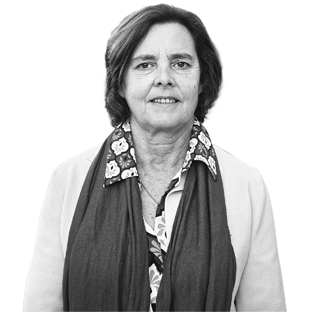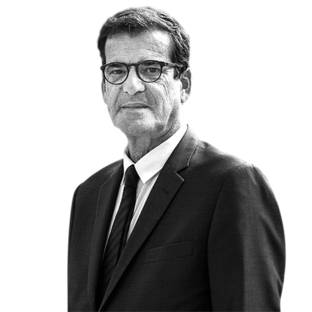Adolf Hitler. The life of the deadly leader in 10 moments

Adolf Hitler was, for the worst reasons, one of the main characters of the twentieth century. A tyrant who persecuted, tortured, invaded, murdered, and, soaked in paranoid theories that were consuming him throughout his life, created a mass death mechanism – the “final solution” – which dictated the death of approximately 6 million Jews.
Here are 10 moments that were crucial to Hitler’s life. Having all been traumatic, mysterious or violent – some gather the three characteristics – they are the mirror of the life of a man who will be in the black pages of history.
Infancy. First contact with radical nationalism
Hitler’s early years are fundamental to identify some of the destructive seeds that mark his nefarious legacy. It is born in 1889 in Braunau AM Inn, in the Austrian region of the still Austro-Hungarian Empire, but its adolescence unfolds mostly in the main northern city of the country, Linz, before moving to Vienna. Linz was a German majority city where exacerbated nationalism, preached mainly by Georg von Schönerer, who defended pangermanism and common and vital space, was very close. His school path was not quiet, retracting “psychologically, preferring to reenact Battles of the Bobs War to study. At 16, he abandoned the school without any qualifications,” says the BBC.
The interest in the arts. Rejection and cosmopolitan experience
As he became widely known, Hitler was passionate about the arts. He tried to join the Vienna School of Fine Arts, but saw his entry denied for two occasions. It is also in the Austrian capital that the future Nazi leader shock with a totally different social reality – cosmopolitan and multi -ethnic – from which he had been used to Linz, which contributed to the growth of the ultranationalist seed that had already been planted in the young Austrian’s brain. Hitler lived in a delicate financial situation, slept from shelter in shelter, and was trying to survive through some works and painting.
World War I. A “primal” experience
« Hitler’s primal experience seems to have been Germany’s defeat in World War I, » wrote Henry Kissinger – a Jew who fled the third Reich to the United States and would be one of the protagonists of international relations during the Cold War. « He never ceased to tell how he was aware of her, bedridden in a military hospital, partially blinded by mustard gas. » And it was the fact that the German leaders of not fighting to the end, together with the blame of the Jews by the Germanic decline, who propelled Hitler to pursue their fantasy, and heinous, crusades.
THE putsch of Munich. From brewery to prison
THE putsch of Munich, also known as putsch From the brewery, it was one of the crucial episodes in the process of ascension to power, even if it did not have the initial goals. The year was 1923. Hitler was the leader of the German National Socialist Party since 1921. Master in the art of rhetoric, captivated the Germans based on eloquent and inflamed discourses. On November 8, Adolf Hitler and his Praetorian guard of the moment, the SAs, broken into a Munich brewery where several top names of Bavarian policy were gathered. The goal was to overthrow the Regional Government and later go in search of the Republic of Weimar. The next day, the Nazis marched over the Bavaria capital, but were neutralized and Hitler was arrested.
The prison and omanifesto. Landsberg and the MEIN KAMPF
It was in Landsberg’s arrest after being sentenced to betrayal following the failed attempt of coup against the Weimar Republic in Munich, which Hitler wrote the document that would eventually define his mission and, consequently, the history of the twentieth century – the MEIN KAMPF (My struggle). « Your philosophy, » Kissinger also wrote, « stretched from the banal to the fantastic and consisted of a popular re-embarrassment of direct, radical and conventional wisdom. » « With the instincts of a prospective and a sick of psychological weaknesses, he maneuvered adversaries of inferiority in inferiority. » Hitler’s stay on Landsberg lasted only 9 months from the age of 5, and several reports point to the fact that he received preferential treatment.
Resentment. Hitler’s driver for power
“In 1930, the willingness of a large part of the German nation was resentful,” wrote Alan Bullock in his work Hitler: A Study In Tyranny. « Hitler, with an almost inexhaustible resentment background to explore in his own character, offered (to the German people) a series of objects to blame for his misfortunes. » Its growing popularity has put strong pressure on President Hindenburg to appoint him chancellor, and on January 30, 1933 Hindenburg gives off and invites Hitler to form government. « Then the Reichstag was dissolved and general elections were summoned. In this picture, the Nazi shock troops went aggressively to the streets (…) (E) The Nazi party won the elections with 43.9% of the votes, » writes David Owen on In disease and power.
The night of long knives. Eliminate internal opposition
Already cemented in power after the victory in the elections and “the proscription of the communist deputies”, which allowed “that a law that gave Hitler unlimited power to be approved by the necessary majority of two thirds”, as Owens reports, Hitler carried out a purge of SA, claiming that the leader, his former fighting companion Ernst Röhm, was preparing one putsch. The operation was conducted by the SS, at date an elite personal security force. Among the victims-which will have been hundreds-they were, according to the Britishrelief figures such as « Kurt von Schleicher; Gregor Strasser, who had been the second in the Nazi party after Hitler; former Bavarian separating Gustav von Kahr; conservative critic Edgar Jung; and Catholic teacher Erich Klausener. »
Munich agreement. Chamberlain’s Carta Branca
September 30, 1938 will be marked in history as the appeasement that gave Carta Branca to Hitler’s megalomaniac and bloodthirsty claims. Neville Chamberlain and Édouard Daladier, British and French prime ministers, respectively, signed with Hitler and Mussolini an agreement that legitimized the attachment of the Sudetas region of the Germans. The debate in England was lit. On one side were the « hawks », led by Churchill, who insisted on rearmament and confrontation. On the other, the « doves » like Chamberlain or Lord Halifax. The « doves » took the best and Chamberlain returned to London with a victorious countenance, wielding the agreement that, he said, would guarantee « peace in our time. » It could not be more mistaken.
Poland invasion. The kick -off of World War II
Not a year since the infamous Munich agreement when the German army marched over Poland. Two days later, on September 3, 1939, British and French declared war to Germany, kicking off World War II. After a decade of misunderstanding-a transverse feature of almost all the great leaders of history-it was proved that Churchill was, after all, right. The defeat of the Polacos was just over a month later, and was also attacked in the eastern flank by the Soviets, with whom the Nazis had already celebrated a non-aggression pact. The first big step of the campaign was taken to total domination and the Lebensraum intended by Hitler.
The end. Drowned by paranoia and defeats, Hitler suicides
Paranoia was wearing Hitler during the war and in 1944 a strong axed in the state of health was given führer. Claus von stauffenberg, the main face of a conspiracy to assassinate Hitler, took a suitcase with explosives for a restricted meeting at the barracks Wolfsschanze (Wolf’s Tante). The goal was not met, but the explosion weakened the Nazi leader. “The most serious effects (…) were psychological and Hitler’s paranoia became much worse,” Owens wrote in the work In power and disease. It eventually committed suicide in his bunker, which was under the former Chancellery of Reich, on a day like today, 80 years ago.







